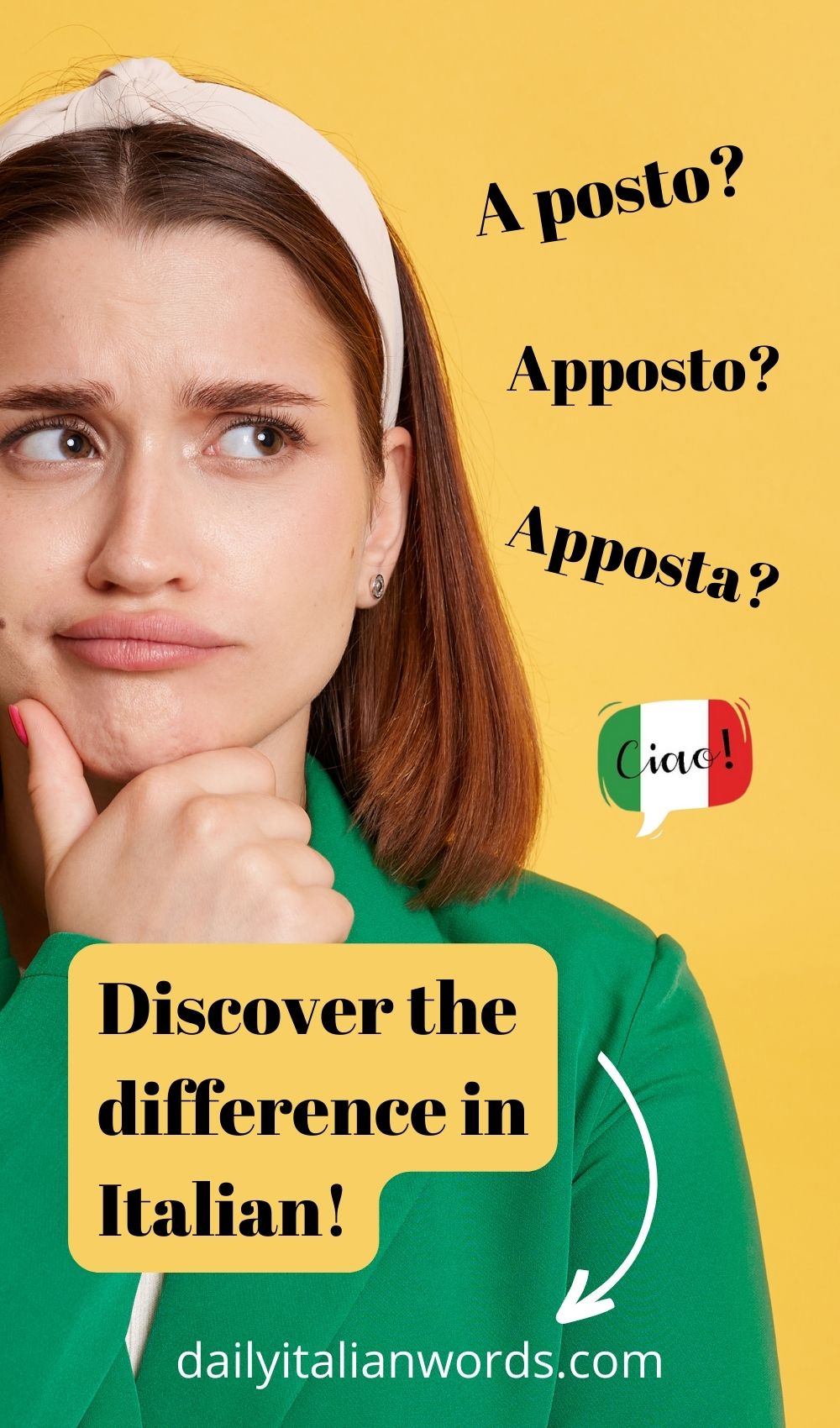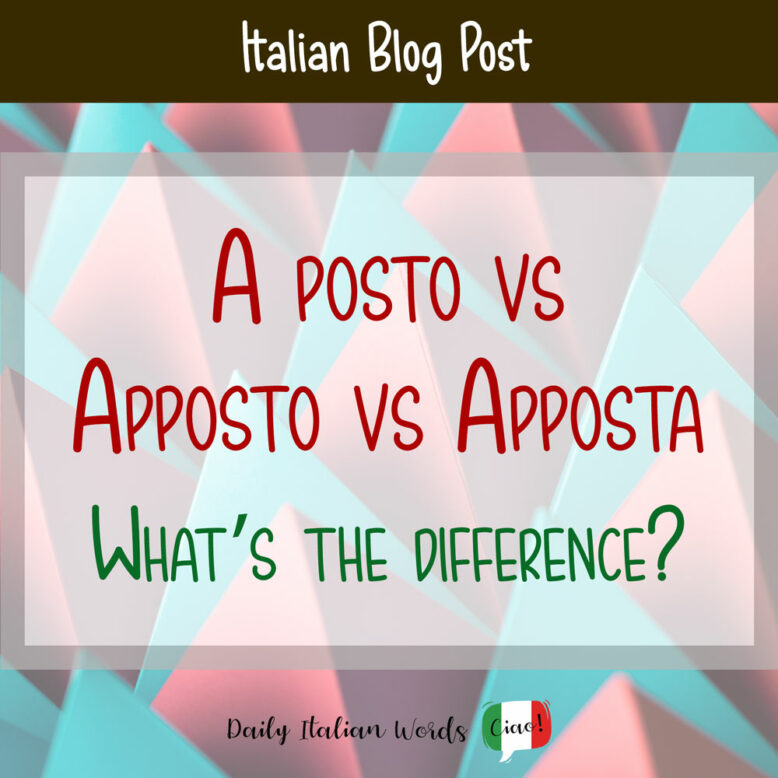When words sound similar in a language, it is extremely easy to confuse them, especially if you are a learner of that language!
Three terms that learners (and sometimes even native speakers) struggle to distinguish in Italian are a posto, apposto and apposta. In this article, our aim is to explain the difference between them!

A posto
A posto is an extremely common expression made up of the preposition a (to) and posto (place). It usually translates as in place, in order or sorted in English.
It appears most frequently in the expression mettere a posto, whose meaning is to put away or to fix.
Il bambino non vuole mettere a posto i suoi giocattoli.
The child doesn’t want to put his toys away.
Devo mettere a posto il motore della macchina.
I have to fix my car’s motor.
If you say that someone has la testa a posto (lit. the head in order), the suggestion is that he or she is right in the head. Essere a posto (lit. to be in order) is used to mean that something is fine or works as it should.
In colloquial Italian, you will often encounter the expression Tutto a posto! which means All is well! or Everything is in order! depending on the context. This phrase may also be posed as a question if you wish to ask if someone or a situation is fine, as in the following example.
Tutto a posto? – Sì sì, tutto a posto, mi è caduto il bicchiere ma per fortuna non si è rotto.
Is everything ok? – Yeah yeah, everything’s fine, my glass fell but fortunately it didn’t break.

Apposto
Apposto, written as one word with two ps, is quite simply the past participle of the verb apporre which means to fix in place, to put or to affix.
Ho apposto la mia firma su tutti i documenti.
I have put my signature on all documents.
Because a posto is often pronounced apposto in speech, owing to a linguistic phenomenon called syntactic gemination, learners and native Italian speakers sometimes confuse them in writing.
Tutto a posto! ✓
Tutto apposto! X

Apposta
Apposta with the word final -a is an adverb in Italian that means on purpose or deliberately.
Having worked with Italian children in a nursery school setting, I cannot count how many times I’ve heard the following phrase:
Non l’ho fatto apposta!
I didn’t do it on purpose!
What is interesting about apposta is that it was originally written as two words: a posta. According to Treccani, both forms are still considered correct, but in modern Italian apposta is by far the preferred variant. A posta mainly survives in specific expressions such as a bella posta (which also means on purpose).
From this we can surmise that the same phenomenon that transformed a posta into apposta may also be happening to a posto and apposto!

Finally, we should point out that apposta, just like apposto, can function as the past particle of apporre if the subject in question is feminine. For example:
L’etichetta è apposta sul retro della scatola.
The label is affixed to the back of the box.
Did you learn something new today? Let us know in the comment section below!

Heather Broster is a graduate with honours in linguistics from the University of Western Ontario. She is an aspiring polyglot, proficient in English and Italian, as well as Japanese, Welsh, and French to varying degrees of fluency. Originally from Toronto, Heather has resided in various countries, notably Italy for a period of six years. Her primary focus lies in the fields of language acquisition, education, and bilingual instruction.


